Stephanie Barnes: Profiles in Knowledge

This is the 112th article in the Profiles in Knowledge series featuring thought leaders in knowledge management. Stephanie Barnes is a consultant, author, and speaker. She is the founder and Chief Chaos Organizer at Entelechy, her consultancy for the realization of potential. She has experience in knowledge management, change management, strategy development, business transformation, and business analysis. She promotes Radical KM, focusing on creativity and playfulness.
Stephanie is a passionate advocate for knowledge management through the alignment of people, process, and technology to meet organizational goals and objectives. She works with organizations to solve problems in creative and innovative ways. Stephanie helps organizations by driving innovation, digital transformation, and process improvement initiatives.
Stephanie takes a radical approach to knowledge management: “Knowledge wants and needs curiosity and learning. Knowledge is context sensitive. Knowledge needs space and time. The things knowledge wants were educated out of us through production line thinking. What we need is to reintroduce the things that have been forgotten: creativity and playfulness. By reactivating these things, things we once instinctively knew, and infusing them into our work activities we are better able to adapt to an ever-evolving environment, and create organizations that are more innovative, flexible, and engaged. Radical Knowledge Management, it’s time to embrace the knowledge economy.”
Stephanie and I worked together as part of Hewlett-Packard’s knowledge management efforts. She was at HP from 1997 to 2003, leaving to start her own consultancy. Stephanie led the KM program for the HP Outsourcing business. After spending many years in Berlin, she recently moved back to Toronto.
Background EducationMcMaster University — Master of Business Administration — MBA, Information TechnologyBrock University — BBA, AccountingExperienceEntelechy: realization of potential — Knowledge Management Consultant/Chief Chaos Organizer, 2003 — PresentHPWorldwide Knowledge Management Program Manager, 2002–2003North American Knowledge Management Program Manager, 2000–2002Knowledge Management Consultant, 1999–2000Consultant, Information Technology Services Management (ITSM), 1998–1999Business Process Analyst, Support Administration, 1996–1998ProfilesLinkedInLinktreeEntelechyMissing Puzzle Piece ConsultingInstagramFacebookFacebook: EntelechyArtMentoring ClubBrock University Grad Spotlight: Donor, Volunteer, EntrepreneurKnowledge Management OnlineThird International Conference on Nuclear Knowledge ManagementTop 50 Global Thought Leaders and Influencers on Creativity 2024 — Thinkers360Profiles in Knowledge: Hewlett-PackardLucidea’s LensContentEntelechy: The realization of potentialRadical KM
EducationMcMaster University — Master of Business Administration — MBA, Information TechnologyBrock University — BBA, AccountingExperienceEntelechy: realization of potential — Knowledge Management Consultant/Chief Chaos Organizer, 2003 — PresentHPWorldwide Knowledge Management Program Manager, 2002–2003North American Knowledge Management Program Manager, 2000–2002Knowledge Management Consultant, 1999–2000Consultant, Information Technology Services Management (ITSM), 1998–1999Business Process Analyst, Support Administration, 1996–1998ProfilesLinkedInLinktreeEntelechyMissing Puzzle Piece ConsultingInstagramFacebookFacebook: EntelechyArtMentoring ClubBrock University Grad Spotlight: Donor, Volunteer, EntrepreneurKnowledge Management OnlineThird International Conference on Nuclear Knowledge ManagementTop 50 Global Thought Leaders and Influencers on Creativity 2024 — Thinkers360Profiles in Knowledge: Hewlett-PackardLucidea’s LensContentEntelechy: The realization of potentialRadical KMIntegrating art, artistic attitudes, and a creative practice into our knowledge work/processes creates: Radical Knowledge Management. It enables the adoption of agile/flexible behaviors and culture change which in turn allows the digital transformation of our organizations, so that they are successful in our knowledge age future.
 Radical KM InstituteORCIDPublicationsDesigning a Successful KM Strategy: A Guide for the Knowledge Management ProfessionalWhat Is Radical Knowledge Management?Transforming and nurturing our humanity in an AI-mad worldThe Essentials of Radical KMHow radical KM is knowledge management: Referencing ISO knowledge management systems requirements standard 30401Introduction to radical knowledge management: Making knowledge management sustainableRadical Knowledge Management: Using Lessons Learned From Artists to Create Sustainable WorkplacesRadical Knowledge ManagementRadical Knowledge Management: Using Lessons Learned From Artists to Create Sustainable WorkplacesSerious game: Knoco’s Bird Island, making the point for KM with Nick MiltonThe importance of knowledge management — Freedom after the sharksThe paradox of arts-based interventions [Arts & culture in KM part 8]PostsEntelechyLinkedIn ArticlesLinkedIn PostsLinkedIn Posts: EntelechySilicon Valley Project ManagementReworked5 Tips to Improve the Culture of Your OrganizationRecovering Intuition: Intuition is an important part of who we are and how we know things, and yet we have been educated to believe it’s unimportant and to be ignored. However, everything starts with self-knowledge — and intuition is an important part of that.Communication and Conflict Management: People working together are not going to agree on everything, nor should they. Dealing with conflicts constructively is good for collaboration, problem solving and innovation, not to mention building trust, respect and a healthy organizational culture.Confidence, Courage and Bravery: As we learn new skills it is important to have the confidence to use them in our interactions with others. This takes courage and bravery. In the beginning this will mean feeling the fear and doing it anyway. Trusting that our vulnerability and honesty will be respected and honored. If we have created real psychological safety where people have the confidence and skills to disagree and discuss differences of opinion without it deteriorating into some kind of kindergarten-like tantrum we will have succeeded.Facilitative Leadership: Facilitative leadership skills are about curiosity, vulnerability, trust, respect and sharing context. Everyone is (or can be) a leader. Leadership is not about where a person is in the organizational hierarchy. Facilitative leadership brings all the previous skills together and adds purpose, curiosity, problem solving, creativity, critical thinking, and courage. Facilitative leaders use these skills in our roles within the organization, regardless of what that role is.Big Picture: Putting the Pieces Together: At this stage people are seeing the big picture and the interconnectedness of things, they are crossing the boundaries between the siloes. They are learning to consciously make strategic choices based on curiosity in order to find the most sustainable decisions, challenging assumptions as they collect data and information.Change
Radical KM InstituteORCIDPublicationsDesigning a Successful KM Strategy: A Guide for the Knowledge Management ProfessionalWhat Is Radical Knowledge Management?Transforming and nurturing our humanity in an AI-mad worldThe Essentials of Radical KMHow radical KM is knowledge management: Referencing ISO knowledge management systems requirements standard 30401Introduction to radical knowledge management: Making knowledge management sustainableRadical Knowledge Management: Using Lessons Learned From Artists to Create Sustainable WorkplacesRadical Knowledge ManagementRadical Knowledge Management: Using Lessons Learned From Artists to Create Sustainable WorkplacesSerious game: Knoco’s Bird Island, making the point for KM with Nick MiltonThe importance of knowledge management — Freedom after the sharksThe paradox of arts-based interventions [Arts & culture in KM part 8]PostsEntelechyLinkedIn ArticlesLinkedIn PostsLinkedIn Posts: EntelechySilicon Valley Project ManagementReworked5 Tips to Improve the Culture of Your OrganizationRecovering Intuition: Intuition is an important part of who we are and how we know things, and yet we have been educated to believe it’s unimportant and to be ignored. However, everything starts with self-knowledge — and intuition is an important part of that.Communication and Conflict Management: People working together are not going to agree on everything, nor should they. Dealing with conflicts constructively is good for collaboration, problem solving and innovation, not to mention building trust, respect and a healthy organizational culture.Confidence, Courage and Bravery: As we learn new skills it is important to have the confidence to use them in our interactions with others. This takes courage and bravery. In the beginning this will mean feeling the fear and doing it anyway. Trusting that our vulnerability and honesty will be respected and honored. If we have created real psychological safety where people have the confidence and skills to disagree and discuss differences of opinion without it deteriorating into some kind of kindergarten-like tantrum we will have succeeded.Facilitative Leadership: Facilitative leadership skills are about curiosity, vulnerability, trust, respect and sharing context. Everyone is (or can be) a leader. Leadership is not about where a person is in the organizational hierarchy. Facilitative leadership brings all the previous skills together and adds purpose, curiosity, problem solving, creativity, critical thinking, and courage. Facilitative leaders use these skills in our roles within the organization, regardless of what that role is.Big Picture: Putting the Pieces Together: At this stage people are seeing the big picture and the interconnectedness of things, they are crossing the boundaries between the siloes. They are learning to consciously make strategic choices based on curiosity in order to find the most sustainable decisions, challenging assumptions as they collect data and information.ChangeChange is a big part of knowledge management (radical or otherwise), in reality, it’s a big part of just about anything we do and has come up a lot recently in conversations I’ve been having.
Change is hard when it’s forced, when it’s top-down, when people aren’t involved and don’t understand what’s happening and why; it’s hard when they are not engaged in the process.
So, how do you engage people in change?
The short answer is, you communicate with them, you engage them in discussions. Find out what their concerns are, how they would like to be involved, find out what their thoughts are about the change, maybe they see it as a good thing and want to get involved and help, maybe they aren’t sure or don’t have time. Talk to them and find out. Some of these conversations will be difficult and confrontational, be prepared for that and do them anyway. Be curious.
Communication (both ways, not top-down) is key to so many things and yet many of us are really bad at it. There are lots of books and courses that will help, if you want help. I’ve been reading about Nonviolent Communication lately, and I have read other books in the past. The key is to practice and get better at the techniques that the books/courses recommend and ultimately to do them in real life, something that can be challenging and difficult but very rewarding.
People will say, “I don’t have time”, but do you have time to fail? Time to do it again when it doesn’t work out? Do you really want to deal with the consequences of not trying: broken trust, broken relationships, etc.?
Take the time to talk to people; you won’t regret it — they will tell you what you need to be successful.
Four Potential Focus Areas for a KM strategyAn operational excellence focus for KM aims to improve the internal practices and processes of the organization so that it operates better, faster, cheaper, safer or cleaner.A customer knowledge focus for KM aims to improve the delivery of knowledge to the customer interface — the people who work with the customers on a day-to-day basis — so that customer relationships are maintained, service levels are high, and sales volumes are increased.An innovation focus for KM involves the creation of new knowledge in order to create new products and services.A growth and change focus for KM involves replicating existing success in new markets or with new staff. It is critical to identify lessons learned and successful practices, so that good practices can be duplicated, mistakes learned from, and to transfer existing knowledge to new staff. The Four Business Focus Areas for Knowledge Management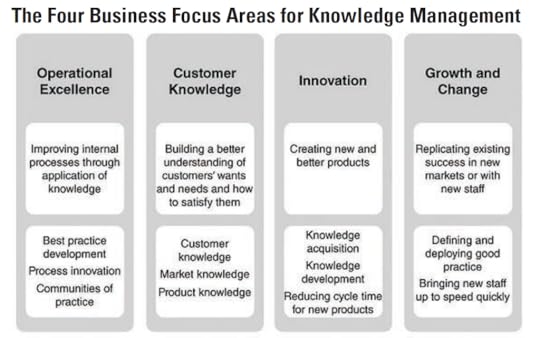 Knowledge Management Core Strategy as a Function of Demographics and Strategic Focus Area
Knowledge Management Core Strategy as a Function of Demographics and Strategic Focus Area
 Knowledge Management Roadmap
Knowledge Management Roadmap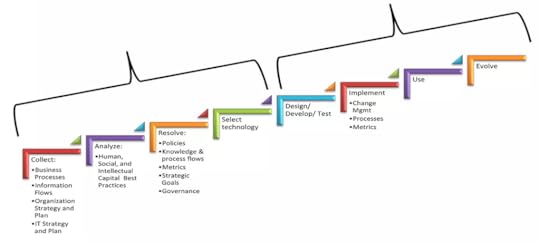 Articles by OthersKnowledge Management Fundamentals (Part One) by Sean MoffittKnowledge Management Fundamentals (Part Two) by Sean MoffittWhy Radical Knowledge Matters by Rajesh DhillonRadical KM: where the magic lives by CMP Content ServicesKnowledge Sharing in a Fast-Changing World — HowNowSpread the Wealth: Why Information Sharing Is King in 2024Creating a Culture of Knowledge Sharing, Not Hoarding by Mary C. LongJanuary 2022 Netikx Seminar: Introduction to Radical Knowledge Management by Rob Rosset 05/05/2022The Knowledge Summit Dublin 2024: Generative AI Meets Human Experience — a Conference Review by Mairéad Mc KeownBalancing AI and Humanity: Insights from Knowledge Management’s Biggest Events in 2024 by Julie MohrThe Ten Principles behind a KM Strategy by Nick MiltonKM implementation needs to be organization-led; tied to organization strategy and to specific organization issues. This is the fundamental behind KM implementation — the number one success factor (if present) and a common reason for failure (if absent).KM needs to be delivered where the critical knowledge lies, and where the high value decisions are made. Knowledge Management needs to focus, and to focus on business-critical or business-strategic knowledge. This might be at operator level (the operator of a plant, the driller of a deepwater well, the pilot of a passenger aircraft) or it might be at senior management level.KM implementation needs to be treated as a behavior change program. Failure to realize this is failure reason number one for KM programs.The endgame will be to introduce a complete management framework for KM. Unlike a KM toolbox, a Knowledge Management framework is a joined-up system of roles, technologies, processes and governance.This framework will need to be embedded into the organization structures. If you don’t embed it in the business, KM won’t survive. KM roles need to be embedded into the organigram, processes into the high-level working process, technologies into the core technology set, and governance into the organizational governance structure. Without this, KM remains separate and optional. Many of the high-profile failures of KM are due to a failure to embed.The framework will need to include governance if it is to be sustainable. Governance is the combination of structure, expectation, support and monitoring that any management discipline requires if it is to be applied systematically.The framework will be structured, rather than emergent. I explain this here.A KM implementation should be a staged process, with regular decision points. Don’t rush in and try to implement KM in one go. Take your time, stage the process, and learn as you go.A KM implementation should contain a
piloting
stage. This is crucial both to test the framework, and to create the social proof you will need for the culture change program.A KM implementation should be run by an implementation team, reporting to a cross-organizational steering group. In other words, just like any other change program! Choose the team wisely — they have a difficult job to do.PresentationsSlideShareKM — What if that’s not true?Designing a Successful KM Strategy
Articles by OthersKnowledge Management Fundamentals (Part One) by Sean MoffittKnowledge Management Fundamentals (Part Two) by Sean MoffittWhy Radical Knowledge Matters by Rajesh DhillonRadical KM: where the magic lives by CMP Content ServicesKnowledge Sharing in a Fast-Changing World — HowNowSpread the Wealth: Why Information Sharing Is King in 2024Creating a Culture of Knowledge Sharing, Not Hoarding by Mary C. LongJanuary 2022 Netikx Seminar: Introduction to Radical Knowledge Management by Rob Rosset 05/05/2022The Knowledge Summit Dublin 2024: Generative AI Meets Human Experience — a Conference Review by Mairéad Mc KeownBalancing AI and Humanity: Insights from Knowledge Management’s Biggest Events in 2024 by Julie MohrThe Ten Principles behind a KM Strategy by Nick MiltonKM implementation needs to be organization-led; tied to organization strategy and to specific organization issues. This is the fundamental behind KM implementation — the number one success factor (if present) and a common reason for failure (if absent).KM needs to be delivered where the critical knowledge lies, and where the high value decisions are made. Knowledge Management needs to focus, and to focus on business-critical or business-strategic knowledge. This might be at operator level (the operator of a plant, the driller of a deepwater well, the pilot of a passenger aircraft) or it might be at senior management level.KM implementation needs to be treated as a behavior change program. Failure to realize this is failure reason number one for KM programs.The endgame will be to introduce a complete management framework for KM. Unlike a KM toolbox, a Knowledge Management framework is a joined-up system of roles, technologies, processes and governance.This framework will need to be embedded into the organization structures. If you don’t embed it in the business, KM won’t survive. KM roles need to be embedded into the organigram, processes into the high-level working process, technologies into the core technology set, and governance into the organizational governance structure. Without this, KM remains separate and optional. Many of the high-profile failures of KM are due to a failure to embed.The framework will need to include governance if it is to be sustainable. Governance is the combination of structure, expectation, support and monitoring that any management discipline requires if it is to be applied systematically.The framework will be structured, rather than emergent. I explain this here.A KM implementation should be a staged process, with regular decision points. Don’t rush in and try to implement KM in one go. Take your time, stage the process, and learn as you go.A KM implementation should contain a
piloting
stage. This is crucial both to test the framework, and to create the social proof you will need for the culture change program.A KM implementation should be run by an implementation team, reporting to a cross-organizational steering group. In other words, just like any other change program! Choose the team wisely — they have a difficult job to do.PresentationsSlideShareKM — What if that’s not true?Designing a Successful KM StrategyDesigning a successful km strategy - April 2015
Knowledge Management Reborn: Modern KM 2022UKKMbF — UK Knowledge Mobilization ForumECKM 2024 — European Conference on Knowledge ManagementNavigo Knowledge Management Conference: Transforming Information into Impact — Helping the Humans in an AI World: creating a knowledge sharing cultureCKS — Creative Knowledge ManagementNuclear Knowledge Management 2016: Aligning People Process and TechnologyWebinar to discuss ways to add creativity to work and lifeKM & AI Summit2025Creativity, Art & KMUnearth the importance of creativity in knowledge management at KM & AI Summit 2025KMWorld2014W4: Knowledge Manager’s ToolkitW14: Sparking Innovation: Creative KM2012 W20: Aligning People, Process, & Tech for KM Success2006 Track B Moderator — Knowledge Sharing & ExchangeSIKM Leaders CommunityPostsMarch 2024 Presentation: Radical Knowledge Management: Helping Humans in an AI World February 2012 Presentation: Aligning People, Process and Technology in KM
February 2012 Presentation: Aligning People, Process and Technology in KMAligning people process and technology in km sikm presentation
December 2007 Presentation: Implementing KM in an ITIL Environment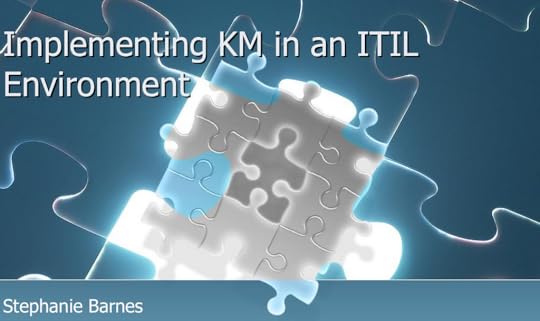 PodcastsPractical, Tactical, and Radical Knowledge Management — APQCIs Knowledge Management About to Get Radical? — APQCRadical KM — WB-40Value through Vulnerability podcast from HEXO ChangeRadical knowledge management, the power of art, tapping intuition, and building curiosity — Amplifying CognitionThe Handshake — Realization of Potential Through Tapping Into Our Own AgencyKnowledge Cast — Knowledge Summit Dublin Guest Panel — Enterprise KnowledgeCreative learning — Discovering Data Podcasthttps://medium.com/media/10682b8276cecf30cd4676badab37355/hrefAsking the Hard Questions — Radical Knowledge Managementhttps://medium.com/media/15b580afbb784ec9c8552adf6e948be4/hrefKnowledgeWebCasthttps://medium.com/media/7ffe86b751596d2781e67e13cdd55707/hrefUnlocked: Helping the Human in an AI World — Madelyn Blairhttps://medium.com/media/18c87a52140057756b6c22db45f6bad6/hrefhttps://medium.com/media/422571f15db5f6b152d1492cc1cfb66f/hrefVideosYouTubeThat Channel Stephanie Barnes Interview, part 1 of 3https://medium.com/media/61998de714ffcc3d52c69518cdaba472/hrefThat Channel Stephanie Barnes Interview, part 2 of 3https://medium.com/media/b707771c3dc58a19e33bda18c4920e42/hrefThat Channel Stephanie Barnes Interview, part 3 of 3https://medium.com/media/6d26c1fd5203c55303e7e28125f84351/hrefRadical KM: Accessing Tacit knowledge Through Creativity and Arts-based Interventionshttps://medium.com/media/479bd78098b10f2260d3f9d121b29a9b/hrefRadical KM. Helping humans in an AI world: presentation at CKO Academyhttps://medium.com/media/a3b85f783b4cd454cf1432f35b5caea4/hrefWhy is it so hard to be honest?https://medium.com/media/c287de15cbbc5366bd86f63b226fead0/hrefKnowledge Management Matters: Creativity and Innovationhttps://medium.com/media/ac1946776c09be28c3065e566731017d/hrefBooksAligning People, Process and Technology in Knowledge Management
PodcastsPractical, Tactical, and Radical Knowledge Management — APQCIs Knowledge Management About to Get Radical? — APQCRadical KM — WB-40Value through Vulnerability podcast from HEXO ChangeRadical knowledge management, the power of art, tapping intuition, and building curiosity — Amplifying CognitionThe Handshake — Realization of Potential Through Tapping Into Our Own AgencyKnowledge Cast — Knowledge Summit Dublin Guest Panel — Enterprise KnowledgeCreative learning — Discovering Data Podcasthttps://medium.com/media/10682b8276cecf30cd4676badab37355/hrefAsking the Hard Questions — Radical Knowledge Managementhttps://medium.com/media/15b580afbb784ec9c8552adf6e948be4/hrefKnowledgeWebCasthttps://medium.com/media/7ffe86b751596d2781e67e13cdd55707/hrefUnlocked: Helping the Human in an AI World — Madelyn Blairhttps://medium.com/media/18c87a52140057756b6c22db45f6bad6/hrefhttps://medium.com/media/422571f15db5f6b152d1492cc1cfb66f/hrefVideosYouTubeThat Channel Stephanie Barnes Interview, part 1 of 3https://medium.com/media/61998de714ffcc3d52c69518cdaba472/hrefThat Channel Stephanie Barnes Interview, part 2 of 3https://medium.com/media/b707771c3dc58a19e33bda18c4920e42/hrefThat Channel Stephanie Barnes Interview, part 3 of 3https://medium.com/media/6d26c1fd5203c55303e7e28125f84351/hrefRadical KM: Accessing Tacit knowledge Through Creativity and Arts-based Interventionshttps://medium.com/media/479bd78098b10f2260d3f9d121b29a9b/hrefRadical KM. Helping humans in an AI world: presentation at CKO Academyhttps://medium.com/media/a3b85f783b4cd454cf1432f35b5caea4/hrefWhy is it so hard to be honest?https://medium.com/media/c287de15cbbc5366bd86f63b226fead0/hrefKnowledge Management Matters: Creativity and Innovationhttps://medium.com/media/ac1946776c09be28c3065e566731017d/hrefBooksAligning People, Process and Technology in Knowledge Management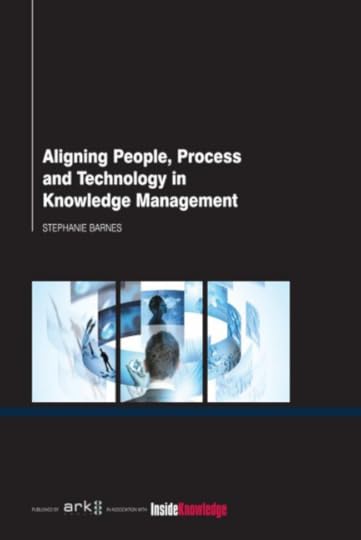

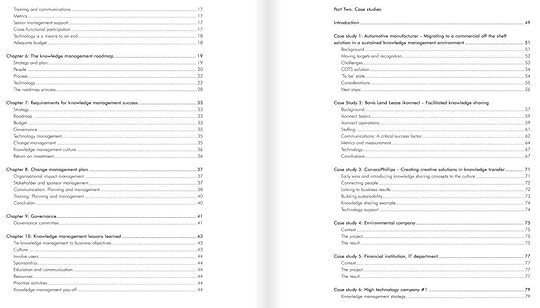
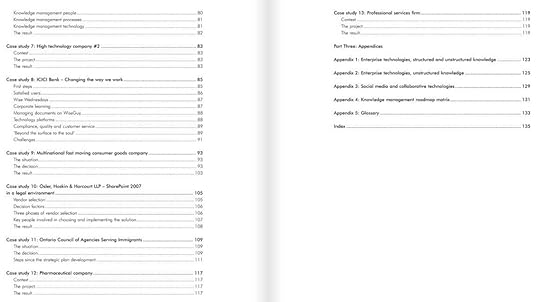 Designing a Successful KM Strategy: A Guide for the Knowledge Management Professional with Nick Milton
Designing a Successful KM Strategy: A Guide for the Knowledge Management Professional with Nick Milton PDFTable of ContentsChapter 1 What Exactly Is Knowledge Management, and Why Do We Need It?Chapter 2 The Knowledge Manager RoleChapter 3 Making the Case for a Knowledge Management StrategyChapter 4 The Ten Principles Behind Your KM StrategyChapter 5 Strategy Structure, and Strategy InputChapter 6 Identifying the Underlying Business Imperatives and DriversChapter 7 Knowledge Management Vision and ScopeChapter 8 Strategic Knowledge Areas 67 Identifying the Strategic Knowledge AreasChapter 9 Assessing the Current State of KM in the OrganizationChapter 10 Knowledge Management FrameworkChapter 11 Information and Content ManagementChapter 12 Knowledge Management TechnologyChapter 13 Change ManagementChapter 14 StakeholdersChapter 15 Pilot ProjectsChapter 16 Making the Business Case and Determining ROIChapter 17 The Guerrilla StrategyChapter 18 A Retention-Based Knowledge Management StrategyChapter 19 Building the Implementation TeamChapter 20 Final WordsAppendix A: Communication Plan TemplateBook ChaptersMeasuring the ROI of Knowledge Management — Chapter 1: Return on investment and KM: Maximizing ROI, Reasons to measure ROI, Determining ROI, Conclusion
PDFTable of ContentsChapter 1 What Exactly Is Knowledge Management, and Why Do We Need It?Chapter 2 The Knowledge Manager RoleChapter 3 Making the Case for a Knowledge Management StrategyChapter 4 The Ten Principles Behind Your KM StrategyChapter 5 Strategy Structure, and Strategy InputChapter 6 Identifying the Underlying Business Imperatives and DriversChapter 7 Knowledge Management Vision and ScopeChapter 8 Strategic Knowledge Areas 67 Identifying the Strategic Knowledge AreasChapter 9 Assessing the Current State of KM in the OrganizationChapter 10 Knowledge Management FrameworkChapter 11 Information and Content ManagementChapter 12 Knowledge Management TechnologyChapter 13 Change ManagementChapter 14 StakeholdersChapter 15 Pilot ProjectsChapter 16 Making the Business Case and Determining ROIChapter 17 The Guerrilla StrategyChapter 18 A Retention-Based Knowledge Management StrategyChapter 19 Building the Implementation TeamChapter 20 Final WordsAppendix A: Communication Plan TemplateBook ChaptersMeasuring the ROI of Knowledge Management — Chapter 1: Return on investment and KM: Maximizing ROI, Reasons to measure ROI, Determining ROI, Conclusion The Definitive Law Firm Management Guide 2nd Edition — Section H — Knowledge management: Make or buy: How to choose a KM system for your firm
The Definitive Law Firm Management Guide 2nd Edition — Section H — Knowledge management: Make or buy: How to choose a KM system for your firm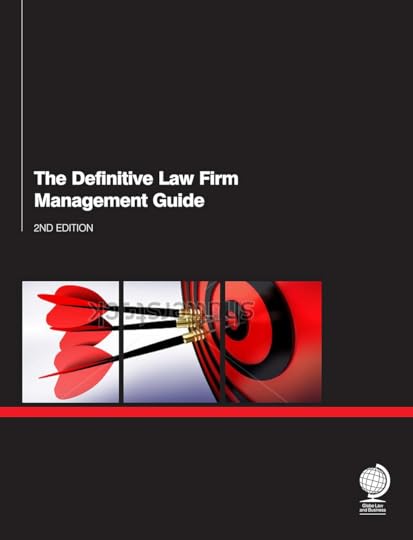 Innovation and Transformation Through Knowledge Management — Chapter 2: Harnessing Knowledge Management to Drive Innovation
Innovation and Transformation Through Knowledge Management — Chapter 2: Harnessing Knowledge Management to Drive Innovation Knowledge Management Matters — Chapter 4: Creativity and Innovation
Knowledge Management Matters — Chapter 4: Creativity and Innovation [image error]
[image error]



